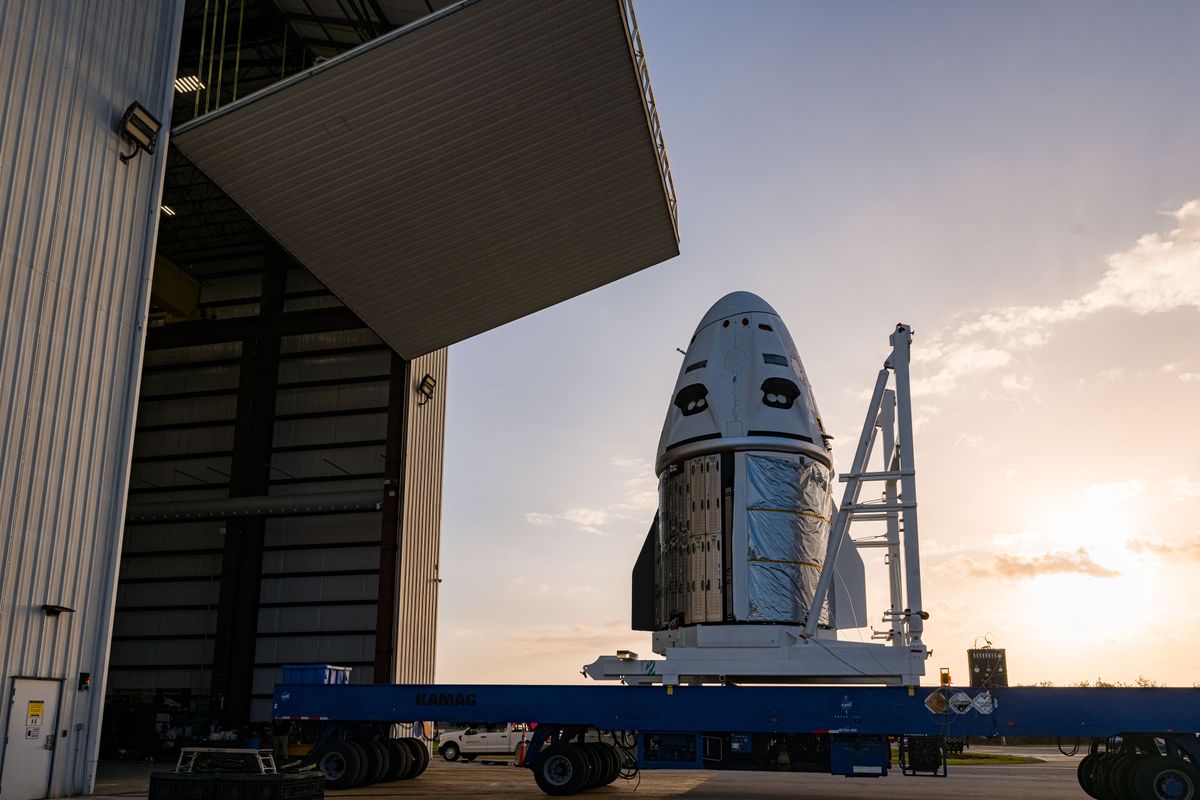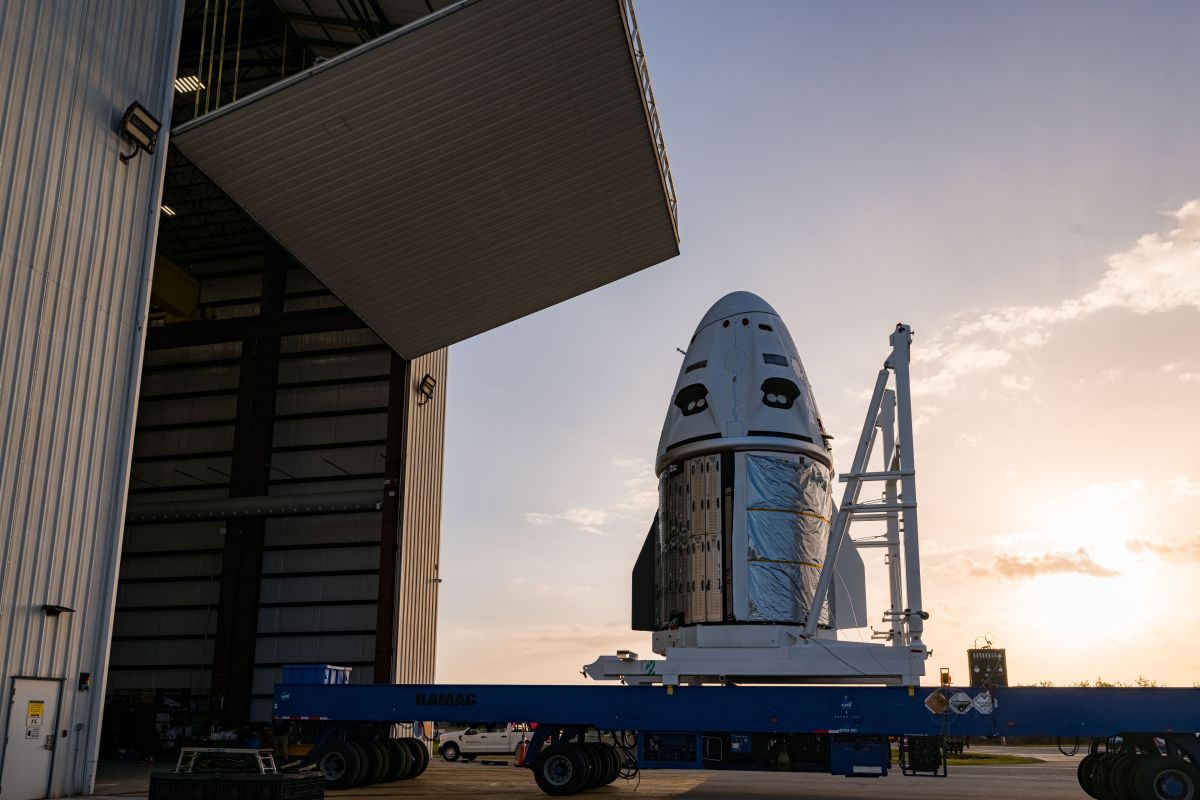
We’ll have to wait one extra day to see SpaceX’s next astronaut mission lift off.
That flight, a four-person mission to the International Space Station (ISS) known as Crew-6, had been scheduled to launch from NASA’s Kennedy Space Center in Florida early Sunday morning (Feb. 26).
But, after a lengthy flight readiness review (FRR) on Tuesday (Feb. 21), NASA and SpaceX decided to delay the liftoff by 24 hours. The current plan calls for a SpaceX Falcon 9 rocket to launch Crew-6’s Dragon capsule Endeavour on Monday (Feb. 27) at 1:45 a.m. EST (0645 GMT). You can watch it live here at Space.com when the time comes.
Related: Meet the SpaceX Crew-6 astronauts
The extra day will allow launch teams to work through a few minor issues with Endeavour and the Falcon 9, SpaceX and NASA representatives said during a post-FRR briefing on Tuesday evening.
For example, team members want to further analyze the thermal performance of the “pod panels” that cover Endeavour’s exterior, said Steve Stich, manager of NASA’s Commercial Crew Program. They also want to look at the composite overwrapped pressure vessels (COPVs) in the Falcon 9, bottles of helium that reside in the rocket’s liquid-oxygen tank.
“We have noticed that there was blending done in some areas on the liner, and we have some testing and analysis to go make sure that those are good for flight,” Stich said of the COPV work during Tuesday’s briefing.
The teams also spotted a potential issue in a Falcon 9 that recently launched a big batch of SpaceX’s Starlink internet satellites to orbit. The Starlink mission was successful, but “there was a little bit of evidence of some combustion” in one of that rocket’s engine bays, Stich said. The Crew-6 team is looking at that other rocket now to make sure that the possible combustion issue isn’t something to worry about on the upcoming astronaut launch.
The Falcon 9 first stage that launched the Starlink batch was flying for the 12th time, whereas Crew-6 will employ a brand-new rocket, Stich noted. Still, it’s common practice for SpaceX and NASA to examine data from all Falcon 9 flights to inform their analyses ahead of crew-carrying missions.
NASA and SpaceX expect Endeavour and its rocket ride to be cleared for liftoff when this upcoming work is complete.
“I don’t think those things will be a concern for the crew flight, but we don’t take things for granted; we want to make sure they’re really ready,” Bill Gerstenmaier, vice president of build and flight reliability at SpaceX, said in the post-FRR briefing.
Related stories:
Crew-6 will send NASA astronauts Stephen Bowen and Woody Hoburg, the United Arab Emirates’ Sultan Al-Neyadi and Russian cosmonaut Andrey Fedyaev to the ISS for a roughly six-month stay. Al-Neyadi will make history as the first Arab astronaut to fly a long-duration mission to the orbiting lab.
As its name suggests, Crew-6 will be the sixth operational astronaut mission that SpaceX flies to the ISS for NASA. Elon Musk’s company has launched two other crewed missions to the orbiting lab in addition to those six — the Demo-2 test flight for NASA in 2020 and Ax-1, a private flight operated by Houston company Axiom Space in April 2022.
Endeavour has flown three of those previous ISS missions — Demo-2, Ax-1 and Crew-2, which launched in April 2021.
There’s currently another Dragon docked at the ISS — the capsule Endurance, which launched last October on the Crew-5 mission. The four Crew-5 spaceflyers — NASA astronauts Josh Cassada and Nicole Mann, Japan’s Koichi Wakata and cosmonaut Anna Kikina — are expected to return to Earth about five days after welcoming their Crew-6 counterparts to the station.
Cassada, Mann, Wakata and Kikina are sharing the orbiting lab with three other spaceflyers at the moment — cosmonauts Sergey Prokopyev and Dmitry Petelin and NASA’s Frank Rubio, who flew to the ISS on a Russian Soyuz spacecraft last September.
Prokopyev, Petelin and Rubio were supposed to return to Earth on that same Soyuz next month, but they’ll now be staying aloft until late September or so. Their Soyuz sprang a leak on Dec. 14, quickly losing all of its coolant to space. Russia plans to launch a replacement Soyuz for them on Thursday (Feb. 23.)
Mike Wall is the author of “Out There (opens in new tab)” (Grand Central Publishing, 2018; illustrated by Karl Tate), a book about the search for alien life. Follow him on Twitter @michaeldwall (opens in new tab). Follow us on Twitter @Spacedotcom (opens in new tab) or on Facebook (opens in new tab).



